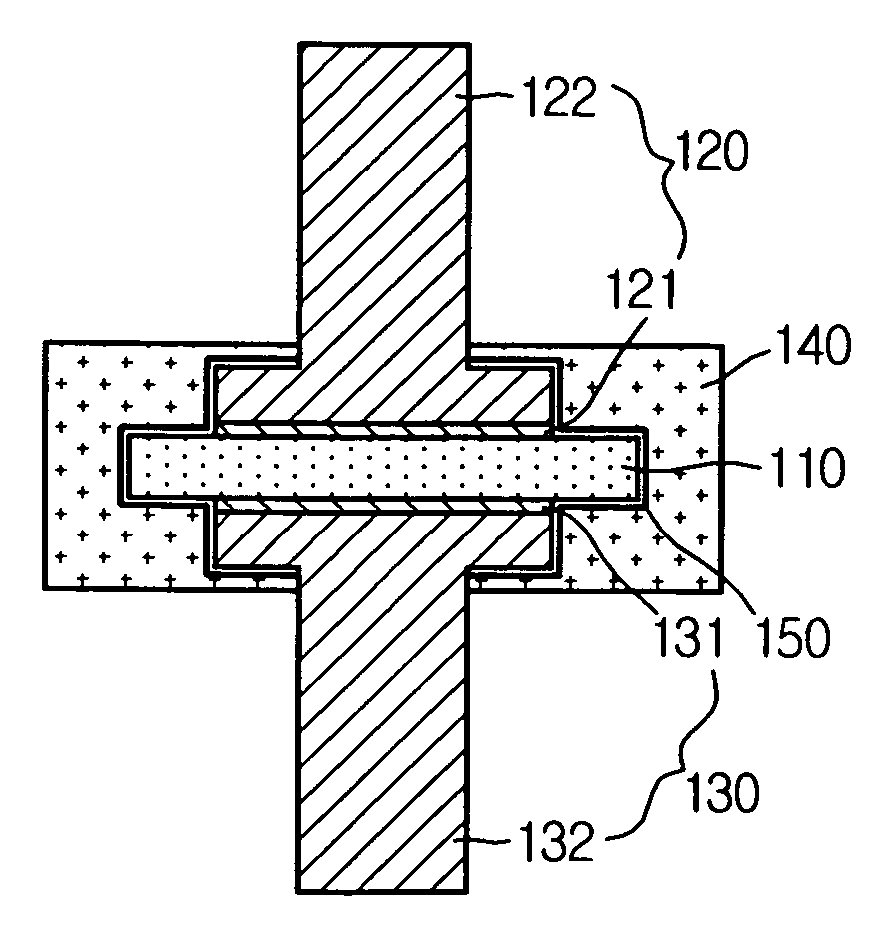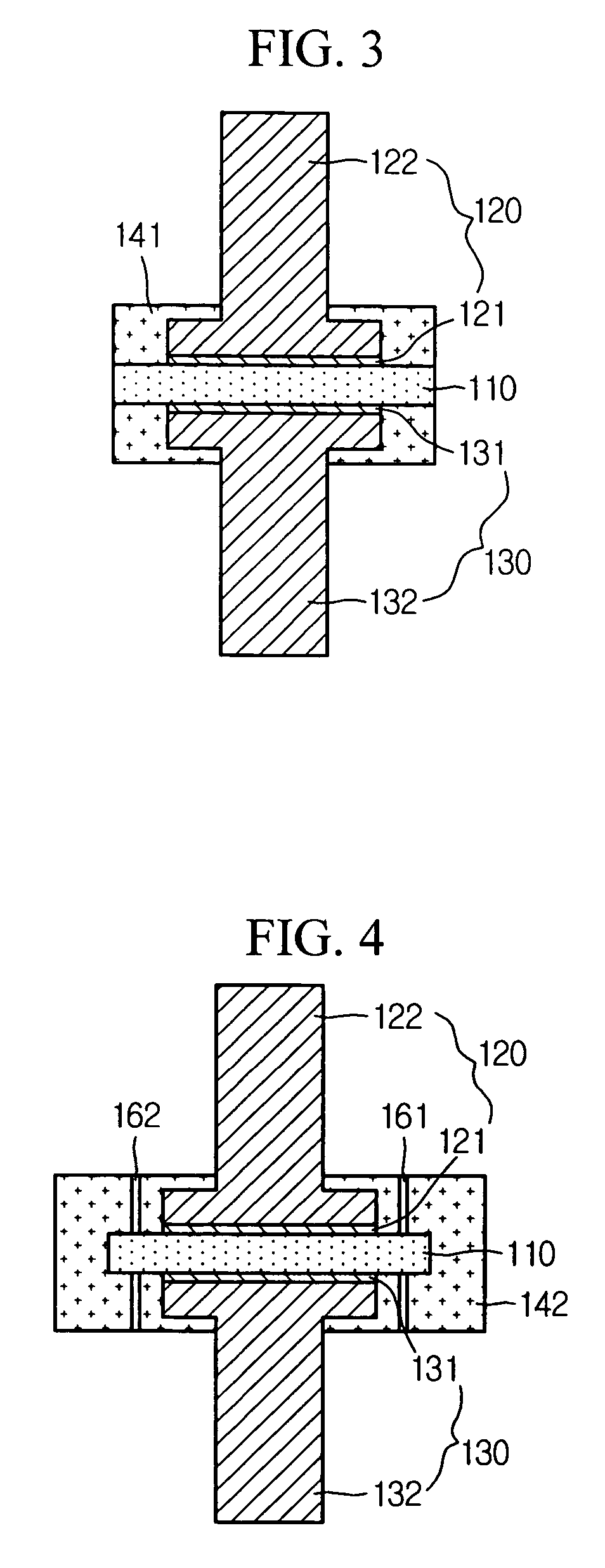PTC current limiting device having molding part made of insulating material
a current limiting device and molding part technology, applied in current responsive resistors, resistor details, varistors, etc., can solve the problems of dielectric breakdown in the end, time difference and nonlinearity of generated resistances, and serious effects on surrounding power equipment and systems, so as to prevent flashover, limit overcurrent, and effectively restrain an arc
- Summary
- Abstract
- Description
- Claims
- Application Information
AI Technical Summary
Benefits of technology
Problems solved by technology
Method used
Image
Examples
first embodiment
[0038]FIG. 2 is a sectional view showing a PTC (Positive Temperature Coefficient) current limiting device according to the present invention.
[0039] Referring to FIG. 2, the PTC current limiting device of this embodiment includes a PTC element 110, a pair of electrode units 120, 130 arranged so that the PTC element 110 is interposed between them, and a molding part 140 prepared around the PTC element 110 and the electrode units 120, 130.
[0040] The PTC element 110 is used for restraining overcurrent in a power system by abruptly increasing an electric resistance at a specific temperature value as a temperature of surroundings rises.
[0041] The PTC element 110 may have different properties according to a current to be limited, but in this embodiment the PTC element 110 preferably has a specific resistance of 100 Ωm or below at 25° C., and the specific resistance at a switching temperature that Joule heat is generated due to the supply of current preferably becomes at least 105 times a...
second embodiment
[0062]FIG. 6 shows a PTC current limiting device according to the present invention. In FIG. 6, the same reference numeral as in the former drawings designates the same component having the same function, and not described in detail.
[0063] Referring to FIG. 6, the PTC current limiting device of this embodiment further includes a pressing means for pressing the electrode units 120, 130 toward the PTC element 110. The pressing means includes a housing 610, and elastic members 620, 630.
[0064] The housing 610 receives the molding part 140, and in this way receives the entire PTC element 110, the entire contact electrodes 121, 131, and a part of the current leads 122, 132. A part of the current leads 122, 132 is extended outward through the housing 610 and connected to a power system.
[0065] The elastic members 620, 630 are supported against an inner surface of the housing 610, and they are configured to surround outer circumferences of the current leads 122, 132 and press the molding p...
third embodiment
[0076]FIG. 8 shows a PTC current limiting device according to the present invention. In FIG. 8, the same reference numeral as in the former drawings designates the same component having the same function, and not described in detail.
[0077] Referring to FIG. 8, the PTC current limiting device of this embodiment has a molding part with a structure different from the PTC current limiting device of the first embodiment. That is to say, the molding part of this embodiment includes a first insulator 180 made of floating insulating material, and a second insulator 190 prepared to surround the first insulator 180.
[0078] The first insulator 180 may be configured to surround the entire PTC element 110, the entire contact electrodes 121, 131, and a part or all of the current leads 122, 132. Thus, the first insulator 180 may give a more effective function of preventing arc generation or flashover.
[0079] The first insulator 180 is configured to directly surround the PTC element 110 so that arc...
PUM
 Login to View More
Login to View More Abstract
Description
Claims
Application Information
 Login to View More
Login to View More - R&D
- Intellectual Property
- Life Sciences
- Materials
- Tech Scout
- Unparalleled Data Quality
- Higher Quality Content
- 60% Fewer Hallucinations
Browse by: Latest US Patents, China's latest patents, Technical Efficacy Thesaurus, Application Domain, Technology Topic, Popular Technical Reports.
© 2025 PatSnap. All rights reserved.Legal|Privacy policy|Modern Slavery Act Transparency Statement|Sitemap|About US| Contact US: help@patsnap.com



